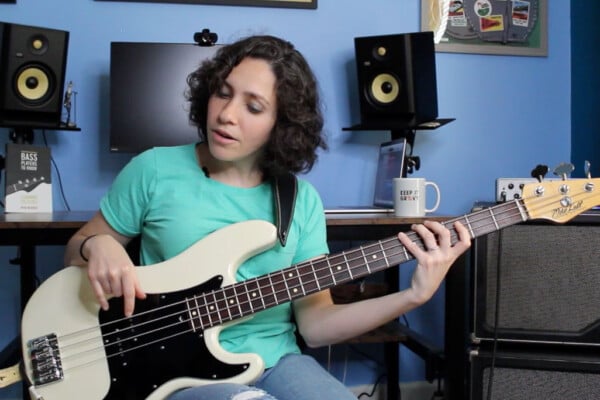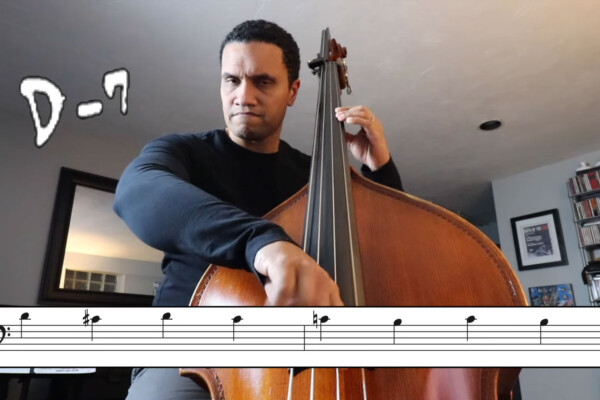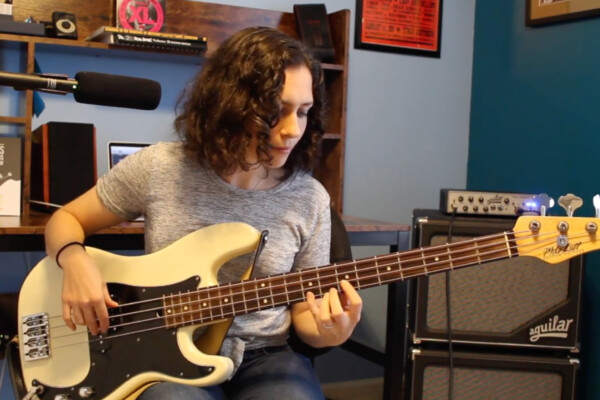Getting Away from Playing the Root on Beat One
Q: I play mostly jazz and am a pretty facile walker, but I’ve gotten into the habit of playing lines that almost invariably lead to the root being on the 1 (or the 3 if it’s a 2-chord measure in 4/4, etc.). While I am guessing that some of the folks I play with don’t mind the solid anchor, I feel like it’s a rut that I should try and get out of. Any good tips/exercises to increase my comfort playing “not the root” on the 1?
A: There’s certainly nothing wrong with clearly outlining the chord changes in an obvious and unambiguous way, but it’s also nice to spice things up a little bit. Learning to play linearly through the changes, without simply walking up to the root, chord after chord, is a great thing to explore in the shed.
Here is one of my favorite exercises. The concept is simple:
- Simply start on our lowest available note (I chose a low E on the four-string bass)
- Choose a rhythmic value to walk (I usually use half-notes to warm up and then move onto quarter notes)
- Never move more than a whole-step (but you have to move every time you play a note)
- Pre-determine your highest note (I chose a high G – 12th fret on the G string)
- Once you hit your high note, simply start moving down the fretboard again
- Keep playing the tune and keep walking up and down the fretboard, one half- or whole-step at a time
Now, the purpose of this exercise is to force you into making decisions on the fly over changes that you’d likely not make otherwise. It also is not a formula for a fantastic walking line, but rather a way to get you out of your box and challenging yourself to play linearly through changes.
You could perceive this as simply walking a scale up and down your fretboard while changing the scale to reflect the changes.
You’ll quickly realize that this forces you to also determine what non-chord tones are appropriate for each chord. Will you use a ?11 on just the major chords? you could use them on dominant chords as well if you choose. Will you use the natural 6th on all minor chords or just the ii-V’s? What scales will you operate from for the various altered dominants you may come across? etc…
I created an exercise using the tune, “Countdown” by John Coltrane (download the transcription). When working on this, I make sure to choose tunes that are non-diatonic (so I’m not just walking one scale up and down the fretboard) and like to challenge myself with non-standard type chord changes but you can start as simply as you need to and then choose progressively more difficult tunes.
I chose to use ?11’s on the Major7 chords but that’s the only upper structure alteration I made. Everything else is diatonic to the chord.
Below each note is the scale or chord degree for reference. It’s a good idea to try and be conscious of every note you play and how it relates to the chord. This also helps serve to keep you from just guessing or winging it. Really think about every note you play and the relation to the chord.
I also find it helpful to pick target notes for myself while playing. By this, I mean that I’ll always be looking ahead and I’ll decide ahead of time what note I want to land on for any given chord coming up. Then, it’s just a matter of navigating from here to there. I do the same thing when I’m soloing. I’m in a constant state of comparing where I am with where I am going. This illustrates why it’s so important to work this stuff in the shed. We just don’t have time for much thinking while we’re actually making music, so the more you can cram into your immediate recall (auto-pilot), the better.
I found this exercise to be challenging and quite eye opening. I hope you find it useful!
Have a question for Damian Erskine? Send it to [email protected]. Check out Damian’s instructional books, Right Hand Drive and The Improviser’s Path.



